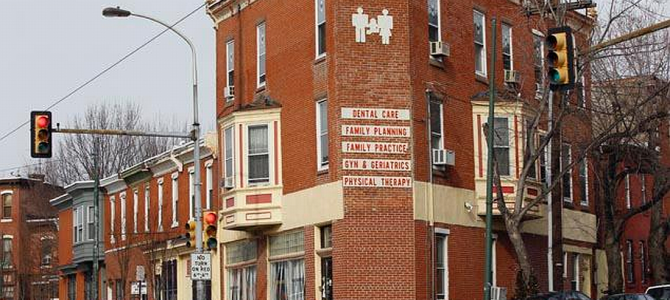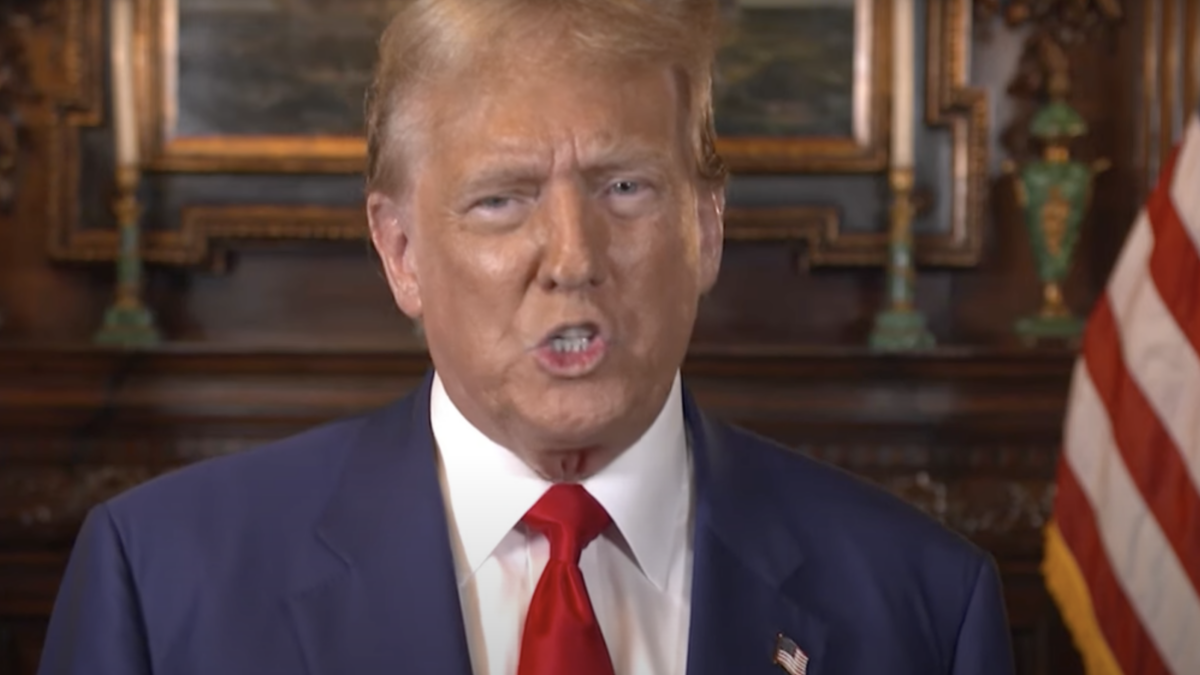
“Gosnell: The Trial of America’s Biggest Serial Killer” tells the story of Kermit Gosnell from the early stages of the police investigation into his abortion facility through the end of his court trial. Gosnell was an American doctor convicted of murdering babies born alive after abortions, of involuntary manslaughter for the death of a mother following an abortion in his facility, and of several felony counts of late-term abortion.
The film debuts across America Oct. 12, 2018, and chronicles the prosecution and police forces who worked to end Gosnell’s macabre abuses of women and children in Philadelphia. The true-crime film is based on a best-selling book written by a husband and wife team, Phelim McAleer and Ann McElhinny, with a desire to tell the stories of all of the people hurt by the practices in Gosnell’s facility.
Despite the raging popularity of this genre, and book’s bestseller status, its movie faced significant roadblocks in funding, filming, and distribution, because of ideological opposition to its material—crimes in an abortion facility.
First, the Crowdfunding Difficulties
The film ran into issues with Kickstarter, a crowdfunding website the filmmakers initially planned to use to fund the movie’s development. The website kept taking down their page with complaints about the subject matter.
“Kickstarter tried to censor us—it didn’t work,” said McAleer. Kickstarter objected to phrases the film producers used to describe what Gosnell did, including “thousands of babies stabbed to death.” Kickstarter CEO Yancey Strickler, however, asserted that they would have allowed those words on the campaign.
“The creators replied with a spirited defense of the graphic depiction they wanted to include. We decided to bend our rules and give them [a] green light to launch at their convenience,” Strickler said about the wording of the campaign and his willingness to work with the film project.
Since disagreements with the phrasing and timing were delaying the progress with funding the film, however, the team relocated their efforts to IndieGoGo, another crowdfunding site. There the film raised $2.37 million, setting a record for the most money raised in a short time on the site.
The the Distribution Problems
Even after securing funding and actors willing to deal with the complicated and politically dangerous topics in the movie, its obstacles to production weren’t over. Creating a film is only part of getting it before consumers, and finding a distribution company proved just as difficult as the initial fundraising. Although the film was finished in October 2015 and release initially planned for 2016, it ultimately took another two years to release the film.
“Each one [distributor] would say: ‘Great, important film—just too controversial for us,'” McAleer said in a phone interview. In addition, the judge who had presided over Gosnell’s trial sued them to stop the release, adding additional delays. The lawsuit was settled, allowing the film to continue through the distribution process to its recent release.
What So Many People Don’t Want You to See
Spoilers below.
I knew Gosnell’s story well before viewing it, so I expected the film to be difficult to watch. It was both easier and harder to watch than a movie focusing on the grim subject of death, crime, and unrepentant evil should be. It’s well-written, beautifully filmed, and very well cast.
The movie opens with a woman in Gosnell’s facility taking a cell phone picture of something, later an important part of his trial. It cuts to Detective James Wood and Assistant District Attorney Lexy McGuire right before they are pulled into the case to do a raid on what they think is an illegal prescription drug operation.
The pacing is on point as the police, Drug Enforcement Administration, and FBI quickly realize that they’re not dealing with just a drug situation, and struggle to figure out how, or even whether, to proceed with a case certain to be politically full of systematic issues. How do you take on murder in an abortion facility without taking on abortion itself, and how do you take on an African-American abortion doctor without charges of racism?
Much of the movie depicts the lawyers’ initial legwork building a careful case and the law enforcement officers digging through disturbing and disgusting conditions. All of this is troubling but very watchable, especially for fans of any sort of procedural drama. The juxtaposition of the seriousness of Gosnell’s crimes with his jovial and soft-spoken demeanor is jarring and off-putting, perhaps best represented by him sitting down to play classical music on his piano as the police execute a search warrant on the premises, uncovering files and evidence of wrongdoing.
Far more emotional are the scenes of the grand jury, and later the courtroom. The testimony of Gosnell’s staff — untrained, often teenagers still in high school — who used handmade color-coordinated charts to administer powerful, custom-mixed drugs to patients without any doctor supervision is shocking. The attitude of a Department of Health nurse — who states that she did not investigate the facility because it would interfere with a woman’s right to choose, despite a thick stack of complaints and a large span of years since any onsite inspection had happened — is both depressing and perfectly showcases how politically motivated abortion facility regulations too often are.
The courtroom scenes are difficult, but not because they’re gory or salacious. Rather, the film keeps things clean and on the surface appropriate. No overt images are shown, no blood-covered baby bodies like you might expect in a film like this. The filmmakers do have a website with resources, including some of the more important visuals from the trial itself, like the referenced photograph of Baby Boy A.
But the emotional weight comes from the testimony itself, taken right from the actual case. When another doctor testifies that she has performed more than 30,000 abortions and never resorted to any of the tactics Gosnell used, it doesn’t make his actions more horrible, because they’ve been horrible all along. Rather, it reminds viewers that, even done cleanly and “safely,” an abortion results in a death.
Although the facts of the case have already been well laid out publicly, the movie does a good job of keeping suspense over the verdict high. Gosnell makes you pity the jurors listening to and viewing all of the evidence, but also the prosecution — the law enforcement agents forced to stare evil in its face and wonder if this evil will escape.
The line that sticks most in my mind after viewing this is one from McGuire to the District Attorney Dan Molinari on why she wanted to move forward with the case: “There’s nothing that man did illegally for 30 years that protects women or children. And you don’t have to be a pro-life activist to see that.”
A Reality Worse Than Fiction
It might be tempting to try to dismiss the horror of this case as overblown drama, but the reality is that this is a retelling of actual events, taken from court transcripts and the accounts of people who were there. The paper trail from the raid of the Women’s Medical Society by the DEA, the Philadelphia Police Department, the Pennsylvania Department of Health, The Pennsylvania Department of State, and the Pennsylvania Dangerous Drug Offender Unit lays out the shocking conditions of Gosnell’s facility as they found it.
The reports of the investigators to the grand jury described the state of the facilty as “filthy,” “deplorable,” “disgusting,” “very unsanitary, very outdated, horrendous,” and “by far, the worst” of the places they had seen. According to the report, there was blood on the floor, on the chairs, and on the blankets patients sat on.
As shown in the movie, women in the facility were sedated by unlicensed staff, working from handmade charts, with expired medication. Investigators compared patient care areas to a “bad gas station bathroom.” Proper inspections of the equipment were also lacking, leaving women who might need resuscitation in dangerous situations vulnerable—women like refugee Karnamaya Monger, who died after Gosnell botched her abortion.
In case all of this was not horrifying enough, investigators found the remains of aborted babies stored disrespectfully and unhygienically. Just as the movie showed, in Gosnell’s facility trash bags on the floor, milk jugs, the employee refrigerator, and orange juice containers all contained the remains of dead babies, and a row of jars containing the severed feet cut off of babies occupied a shelf. Gosnell told one of the detectives at this time that 10 to 20 percent of the babies were older than Pennsylvania’s legal age limit of 24 weeks’ gestation—also placing them over viability at the time of their deaths. Monger’s baby was still in the freezer, and 45 babies were removed from Gosnell’s facility, all deceased.
This film isn’t only a movie to see if you’re ardently pro-life. This is a movie for anyone interested in crime, in justice, in health care, and in reform. It’s an exercise in looking at what drives human desperation, but also how evil can hide in plain sight, rubber-stamped by those afraid to disturb the status quo, or worried that any oversight could lessen legal rights.
It’s a story that needs to be told, and in this telling was well-crafted, walking up to the line of where the viewer would need to turn away then pulling back, allowing the full story to be digested. It’s important to assess how these things can happen in plain sight, in an era of legal abortion, when for so long we’ve been told that it’s keeping abortion legal that keeps women safe.
Gosnell’s facility was legal, respected, and terribly unsafe for mothers and babies. If nothing else, this case, this film, and this story should cause people to question who is being served and helped, and who is being hurt by all this.
UPDATE: In a further conversation, McAleer told me more about both the film and he and his wife’s motivations in covering the story.Some of the most important and interesting parts of that interview are below.
On their motivations for making this movie and how they approached it: “We came at this from a journalistic point of view. It’s not a prolife film. It’s a journalistic film. It’s a fresh look at the story from a true crime angle.”
I asked about rumors that the filming process had changed the views of some of cast on abortion, and he told me, “It changed us—myself and Ann. We would have described ourselves before this as neutral on abortion. We now realize what that means. Neutral on abortion means pro-abortion. One of the actresses came up to us at a screening recently and said, ‘This changed me from prochoice to prolife.’ It’s almost just like at the trial. Everyone who was in the trial who was prochoice at the start had their faith in abortion shattered. And they became a lot more—I’m not saying they all became prolife- but they all became very skeptical of the prochoice position.”
He told me as well about his feelings on the prolife movement before beginning the project, “I always thought that those pictures were photoshopped. I didn’t trust prolife pictures that I saw. I think that what the strong point of this film is that it’s based on court room testimony. There’s no photoshopping, there’s no political slogans, there’s no grandstanding, everyone has to tell the truth. And when people hear the truth and research it they’ll be going, ‘Oh, I didn’t know that’. Planned Parenthood has done a great job of sowing mistrust of the prolife community. Of saying ‘Don’t trust those people, they’re lying.’ This will show what these abortion people said under oath in court.”
I asked him about their main goal for this story and film, “Telling the truth, actually. People can do with that truth whatever they want. But it’s important for them to have the facts first.”
I asked about media coverage, and lack thereof, on stories like this, and why he thinks that happens. He responded, “I think most journalists are prochoice. Some of them are abortion zealots and advocates, many of them are casually prochoice. So, they avoid anything that will tell the truth about abortion. You can see that from their failure to cover the trial. I think they want to keep the unpleasant facts hidden because they fear both the law and public opinion.”
Finally, I asked what was most important for people to know before they saw this film: “Before they go in, I want them to know that it is not gory, it’s PG-13, it’s a ‘Law and Order’ episode. Don’t be worried about things you might see—there’s nothing to see. Coming out of it, I’d like them to know that it is heavily, heavily, heavily based on trial transcripts. The crazy bits in it that you think we made up are not made up, they’re true.”









